
Joe Jewell is melting ice very, very quickly. By dropping ice crystals into a shock tunnel, the associate professor is determining the risk that atmospheric particles pose to vehicles that travel at Mach 5 or higher — the hypersonic threshold.
“Dust particles, rain, snow, these are usually pretty benign if you're traveling slowly. But even at airliner speeds they can cause problems,” Jewell says. “So if you’re traveling at Mach 6, the uncertainty only gets larger for little particles like ice crystals. Kinetic energy goes up with the square of the speed, so a particle at Mach 6 has 36 times more energy than at Mach 1.”
The U.S. Navy’s Office of Naval Research, which has defense-related interests in hypersonic vehicles, has awarded $750,000 to the University of North Dakota and Purdue to study what happens when ice crystals slam into a hypersonic shock wave. Jewell is partnering with UND researchers Hallie Chelmo, in mechanical engineering, and David Delene, in atmospheric sciences, for their expertise in making and characterizing atmospheric ice crystals.
Chelmo, who is the principal investigator on this project, says computational researchers across the country are looking for this kind of experimental data in order to analyze the physics inside the shock wave next to a hypersonic vehicle.
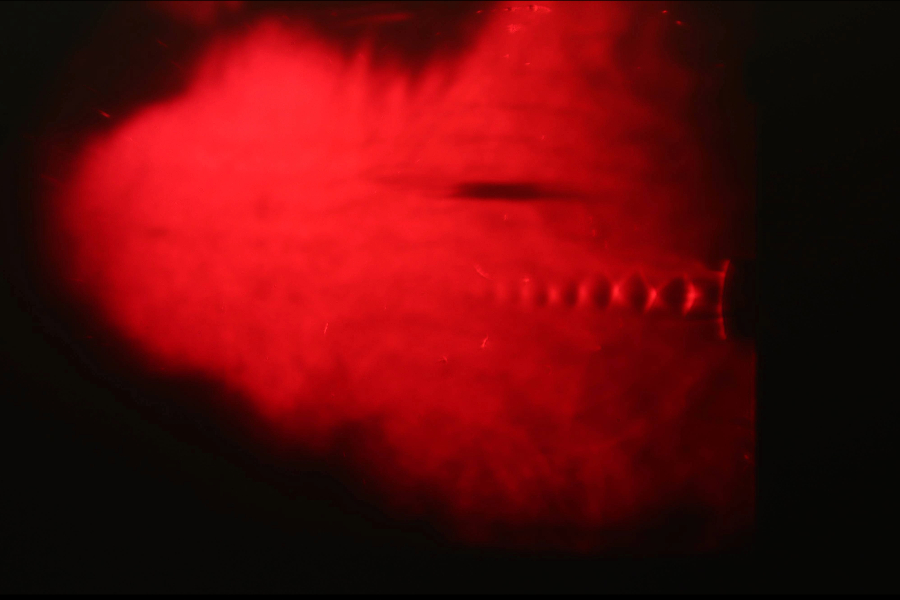
This demonstration of Schlieren videography shows diamond-shaped pressure gradients in the air exiting an aerosol duster spray can. Visualizing pressure gradients will help determine the effect of shock waves on atmospheric water and ice. (Photo by Joe Lavalley).
“That is exactly what we’re developing,” Chelmo said. “We’re developing new methods to fundamentally understand shock wave-particle interactions, and we’ll give that data to the computational researchers.”
This study of atmospheric ice crystals is an effort to pin down design criteria for hypersonic vehicles and their propulsion systems. As seen after the 2010 eruption of Eyjafjallajökull, a volcano in Iceland, microscopic particulates like ash can build up in the heat of an aircraft turbine engine and cause it to seize up. Volcanic ash can also scratch airplane windows so badly that it becomes difficult for pilots to see.
But while the threat from particulates is obvious, water and ice are curiosities because they change phase more readily. The question is whether hypersonic vehicles — like missiles flying toward their targets, or spacecraft reentering the atmosphere — are vulnerable.
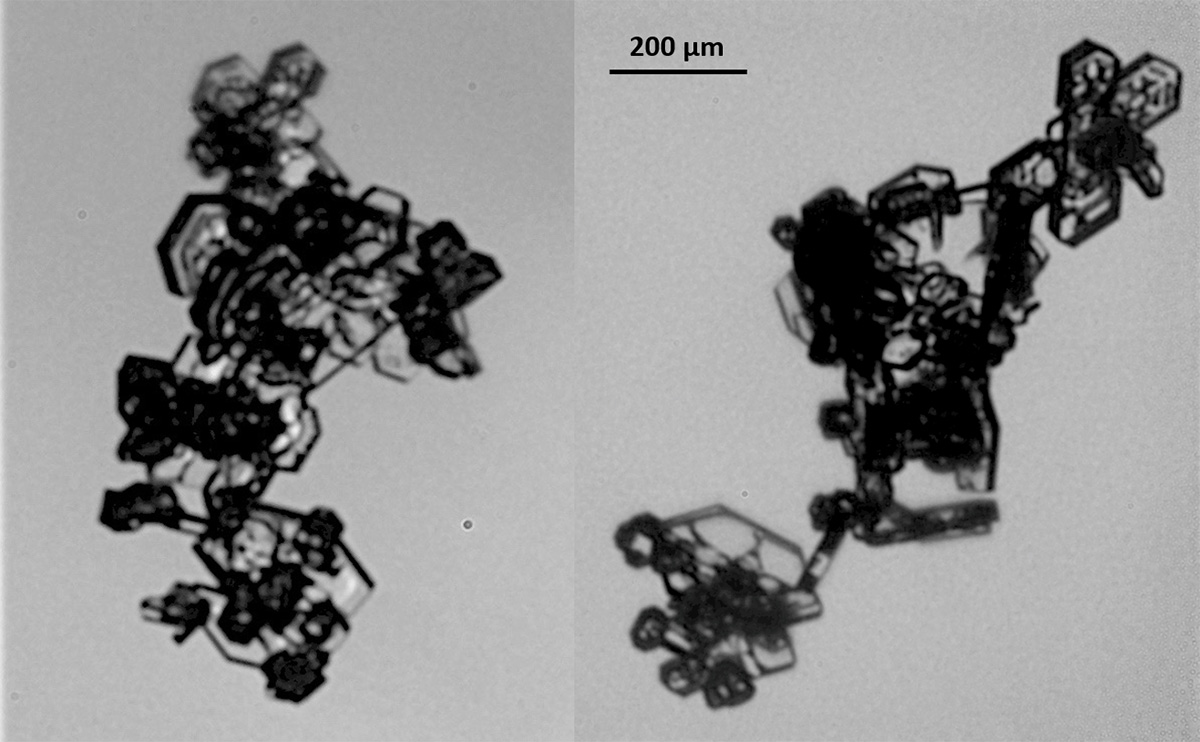
Representative in situ stereo images of small ice crystal aggregates, roughly 200 micrometers wide, present in most cirrus clouds. Hallie Chelmo and David Delene at the University of North Dakota will be providing ice crystals like these for testing in shock waves at Purdue. (Image provided by David Delene/UND).
“Air can be quite cold in the atmosphere, and yet a vehicle passing through it at Mach 6 or some other number can be quite hot. A hypersonic vehicle develops a shock wave in front of it, and the gas behind the shock wave is higher pressure and temperature. Certainly the gas is hot enough that if ice were to sit in it, it would melt,” Jewell says.
This interdisciplinary research is something neither institution could do on their own, Jewell says. “That’s why it’s a good collaboration. I know very little about ice crystals, but I know a lot about shock waves.”
Atmospheric ice like this is tricky to make, Chelmo says. You don’t just fill a tiny tray and stick it in the freezer — ice will build out from the walls, or from whatever solid they’re clinging to. The expertise at UND is in their method of creating realistic ice aggregates in a repeatable way: “We need to actually keep them levitated to not physically interfere with the freezing process, to mimic ice formation in the atmosphere,” she explains.
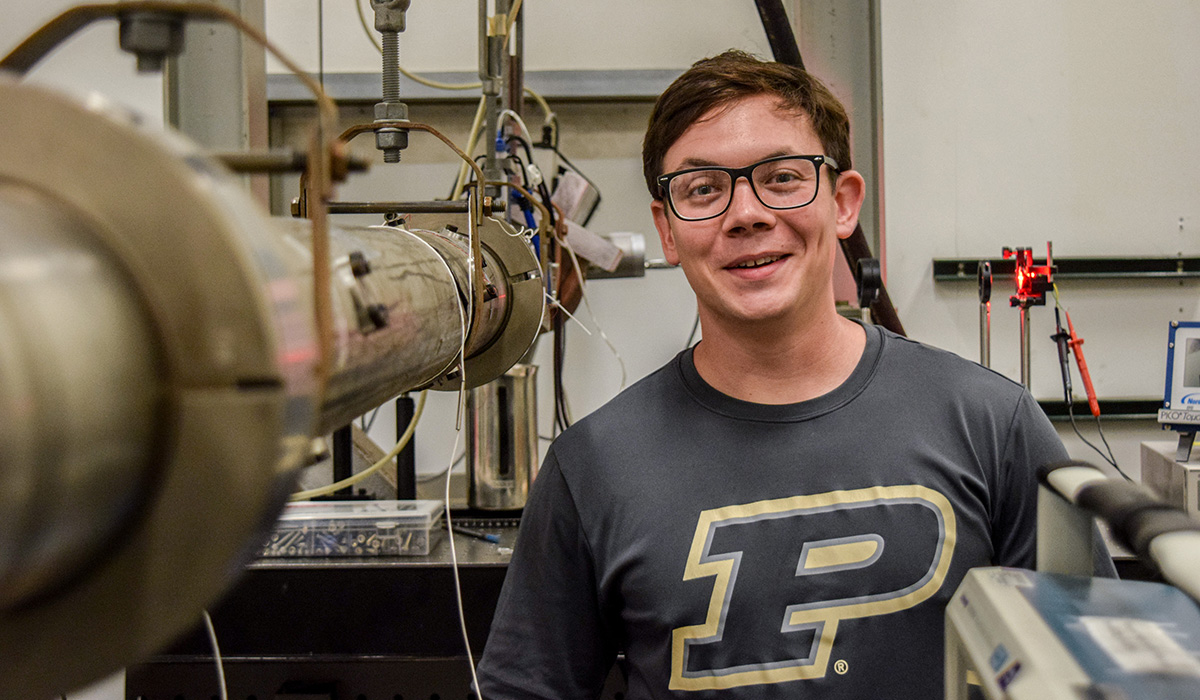
AAE student Joe Lavalley helped recommission the department's shock tunnel in the Aerospace Sciences Lab, located at Purdue Airport. He also prepared the tunnel for its initial tests with water. (Purdue University photo/Alan Cesar).
The crystals are also tiny, on the order of 200 micrometers. Up close, they are “complex like snowflakes, but they don’t have the same fractal patterns. This indicates different formation pathways that are poorly understood at the moment.They are also smaller than snow and hail that fall to the ground,” Chelmo says.
Jewell’s shock tunnel, on the other hand, is a relatively simple device — albeit very precise in its details — that will pummel these tiny crystals as they fall. At its most basic, a shock tunnel is a closed, straight tube that can be split into sections, with a diaphragm in between. After drawing a vacuum on one side, breaking the diaphragm will send a shock wave propagating down the other side.
“It's a lot like what our Mach 6 wind tunnel would do if it didn't have a nozzle,” Jewell says. “It’s a finely tuned shock tunnel, with ports for pressure transducers on the sides and top. Calibration is its original purpose. Simplicity is its virtue.”
AAE students Joe Lavalley, Henry Lewis II (BSAAE ’22, MSAAE ’23) and Siddharth Bhatnagar, have assisted with the research and adapting the tunnel to accept the ice and droplet dispenser developed by UND. They have adapted the business end of UND’s droplet and ice crystal dispensers to fit in one of the spots with slightly bigger ports. (Lewis has since graduated and accepted a job at Lockheed Martin.)
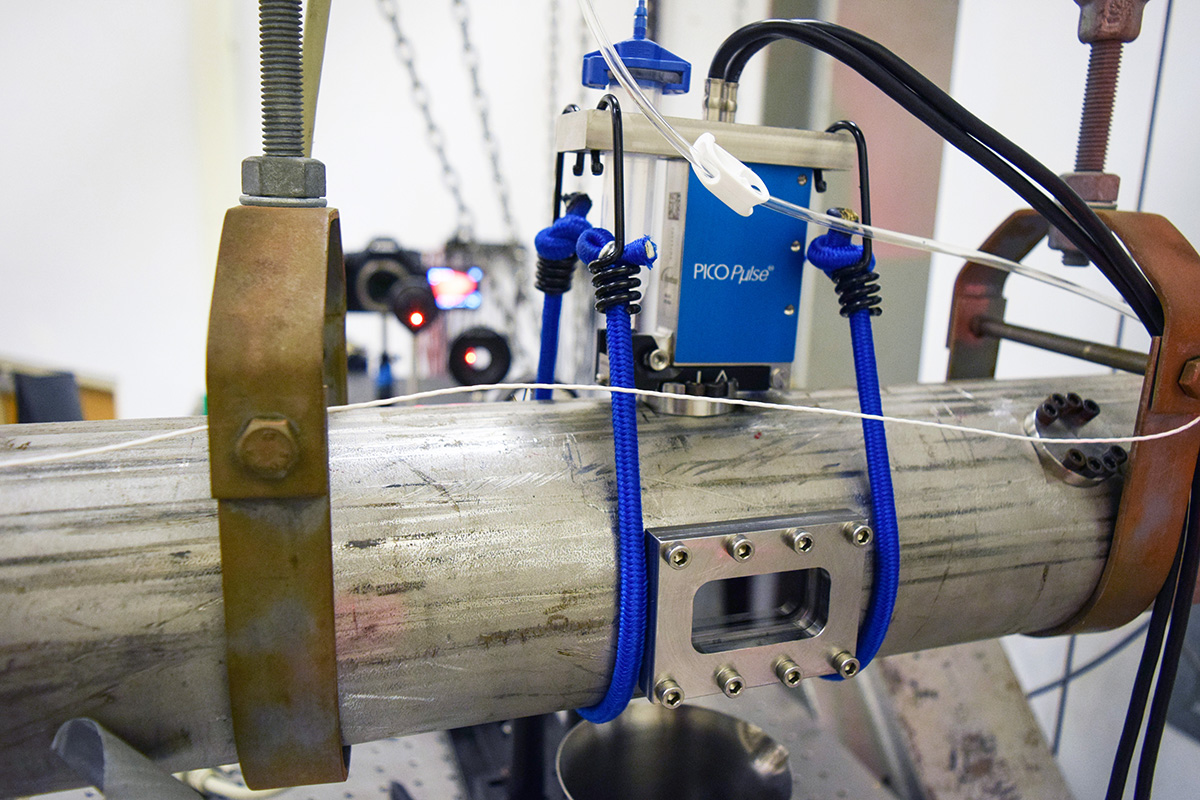
A test section of this shock tunnel has been fitted with a device that releases tiny water droplets in line with the viewing window. The water droplets will provide experimental results while also helping determine the appropriate timing for the shock wave when it comes time to test ice crystals. (Purdue University photo/Alan Cesar).
A viewing window allows them to directly observe the results — but not with the naked eye.
The team will employ a technique called Schlieren videography, which uses specific lighting conditions to visualize density gradients in a gas. The resulting images will show solids as opaque, and liquids and gases in distinguishable ranges of gray. With a high-resolution monochrome camera capturing up to 1.75 million frames per second, even the pressure wave itself will be visible.
“Shock waves are very fast, so we need to take lots of pictures to see what happens,” Jewell says. “You also can't necessarily trigger the shock wave instantly, there's some delay. We're inserting water droplets frequently enough so there's always one in the window. We'll need to release five to 10 per second so when the shock wave does arrive, there'll be one in the window.”
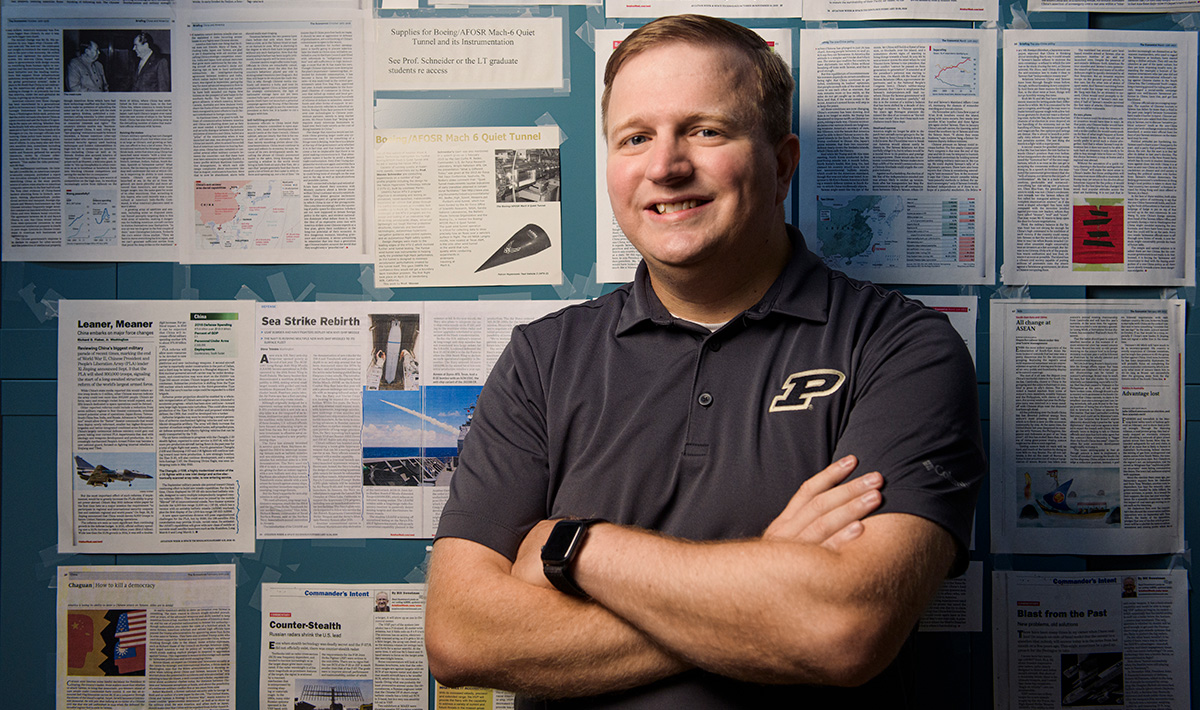
Joe Jewell is the John Bogdanoff Associate Professor of Aeronautics and Astronautics, effective July 1, 2023. This is one of multiple new term-named professorships established this year through a generous gift from an AAE alumnus. (Purdue University photo/Rebecca Robiños).
With this work, Jewell is showing that this device can do so much more than calibrate pressure transducers. Going from water droplets to ice crystals, he hopes to improve timing precision of the shock wave and add more cameras to capture a 3-dimensional view.
“This is a useful and underexplored field,” Jewell says. “Science is always about the in-between cases. That's where the interesting things happen.”

Knowing your way around the hypersonics field is becoming integral for success in aerospace, and a key element of national security. Purdue's Hypersonics Graduate Certificate can give you career and your company a competitive edge. This 100% online program, comprised of four courses for a total of 12 credits, is designed for working professionals who want to learn state-of the-art methods in fluid dynamics, aerospace propulsion, and compressible flows.
